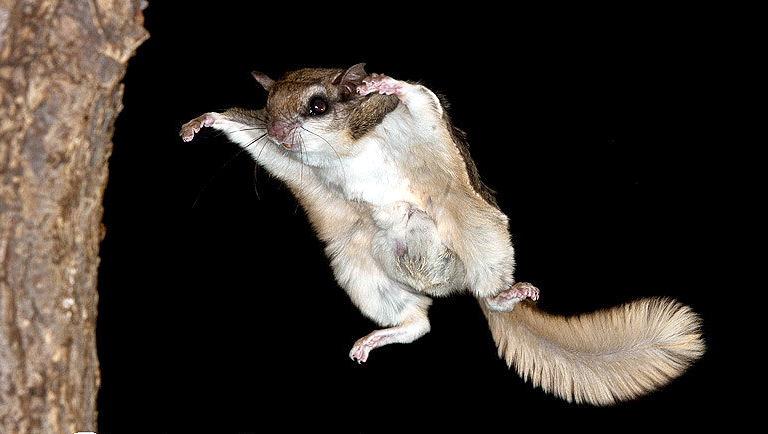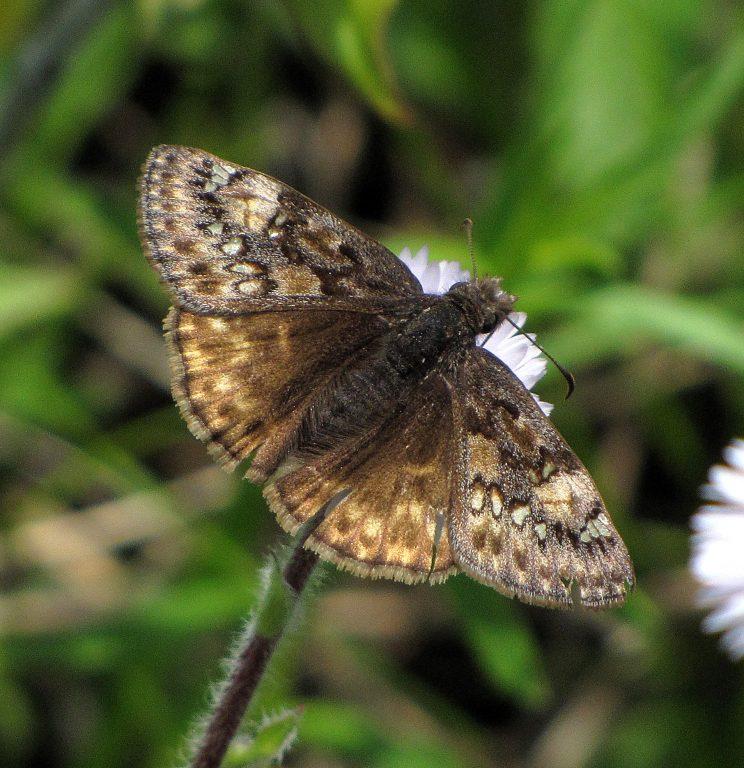by Kathleen Keefe
It can be tough for a species to share 400 public acres with four million people in the middle of Canada’s largest city. Considering what they’re up against, we are lucky that so many species still remain in our park after centuries of making it their home. Sadly, we have lost some special creatures over the last several decades. Although they still live somewhere else in the world, we can no longer see them in High Park. These species are "extirpated", or locally extinct.
Until recently, each one of these amazing creatures was part of an ecosystem here, each system healthier and more perfectly balanced than today. Let’s meet some of the extirpated characters we used to see here.
Flying Squirrels
Have you ever run the 50-metre dash? That’s half the length of a soccer field and that’s how far a flying squirrel can glide through the air! Technically, it can’t really fly, but the furry membranes that stretch between its wrists and ankles work like parachutes to make it sail through the air when jumping from tree to tree and branch to branch. Its flat furry tail acts like a rudder to guide its course. In fact, a flying squirrel can turn left, right, or even change its mind and direction midair and do a 180! While ever so gracefully agile in the air, flying squirrels become sluggishly clumsy on the ground. If far from a tree when danger appears, their only hope is to find a nearby hiding place.
Just think, not too long ago you could see these amazing creatures right in High Park! Well, you could have seen them if you’d had night vision goggles that is. Flying squirrels are nocturnal and do their soaring in the night. They have huge bulging eyes to help them see in the dark and they have very sensitive whiskers that help them feel their way around. They even use scent glands in their cheeks to mark their routes through the woods.
Eastern Hog-nosed Snake
Did you know we used to have our very own cobra look-a-like right here in High Park? The eastern hog-nosed snake has a thick body and neck that it flattens out like a hood, cobra style, when it’s disturbed. If it feels threatened, it will raise its head, flatten its neck to form a hood, hiss loudly and lunge with its mouth closed in the direction of the threat. If the bluff does not discourage the predator, the eastern hog-nosed snake goes to plan B. It rolls over and plays dead, hanging its tongue out of its gaping mouth. Then, to seem less appetizing to fresh flesh eating predators, this snake also vomits and empties its bowels to smell as rotten and foul as possible. If the snake is turned right again onto its belly, it will just flip back over and return to its playing dead routine.
As it swallows its small prey, the eastern hog-nosed snake immobilizes its meal by injecting very mild venom through a set of fangs at the back of its mouth. It can’t inject venom into larger animals or humans and so is not harmful to humans. However, people who mistake it for a dangerous species often kill this snake. The eastern hog-nosed snake is listed as a threatened species in Ontario and in Canada.
Red-headed Woodpecker
Red-headed woodpeckers used to be frequent flyers here but the last breeding pair was seen here in the early 1990s. We can no longer watch their fascinating behavior very easily now that Ontario’s red-headed woodpecker numbers have plummeted by 60% over the last few decades. Here’s what we’re missing from these brightly feathered animated friends.
The male advertises his territory by calling and drumming. If the object of his affection approves of him and his real estate, she answers by tapping on a tree. The male shares his hole in a dead tree or constructs a new nesting site for the pair. Sometimes the female helps him. Their nostrils are covered by feathers to keep out wood particles during excavation. They take turns sitting on the nest, and it’s worth noting that the males take the night shift. The parents are so protective of the family that they will destroy any other nests in their territory.
The mouths of these woodpeckers are specially equipped for catching and gathering food. Their saliva is like glue, enabling them to snag insects in flight right out of midair. They have barbed tongues to help dig out acorns, nuts and seeds they’ve hidden in crevices. They have the most varied diet of all the woodpeckers.

























